Nick Stephens

How did you get started making art?
Making art or being overly active in my creative endeavors has been a consistent pattern since I was very young. My parents provided my brothers and me with endless amounts of printer paper, drawing utensils, play-dough, blocks, legos, sandboxes, etc. They also had a very keen sense for limiting and editing our media participation and encouraged outdoor play and simplistic recreation. These restraints were partially due to budget, but also out of a sense that kids should explore and have unstructured play time. Looking back, I can see that it was rather beneficial for me to have such a childhood.
Drawing has always been something that I was overly interested in. I still have stacks of my childhood art. Perhaps that was my most prolific stage as an artist. To get anything else done in school was always a chore for me. I started noticing that I was better at drawing than the majority of my peers when I was in fourth or fifth grade. I can remember being stubbornly determined to master realistic drawing skills, and to be better at it than everyone around me. (I am still not satisfied with where I am at with my skills, but have given up the competitive side of me.) Throughout junior high and high school I took every art class that I could, except the ceramics and photo classes. I was the newspaper artist and the student-body artist at my high school.
I got my start professionally just after college. It all began when I met Shalece Horejs, a friend of my roommate while I was going to school in Arizona. Her father, John Horejs, was a professional painter and had raised a family as an artist. At this point I was focusing on graphic design as the only practical solution to reconcile my love for art with the seemingly cruel reality that one had to get a “real” job and earn a large amount of money to provide basic necessities in life. Up until this point I had only met one other person who was making a living as an artist. (I need to interject here that no one in my family had ever pursued any kind of creative/artistic endeavor as a vocation. Though many in my family are very creative as a hobby, I come from a long line of hard-working, intelligent and dedicated employees—not freelance artists.) So this newfound friend of mine introduced me to her family. We stretched and primed canvas in their garage, watched her dad paint in the studio, ate meals made by her extremely generous mother, and I got a taste of the home-based production side of the professional art world. A few years later this family’s older son, Jason, started a gallery in Scottsdale, Arizona. He had been selling art at one of the top galleries there for many years and now needed a few new artists to populate the walls of his gallery. At the time I met Jason, I had been experimenting with some of my textural assemblage pieces. He really liked the few pieces that I had done and suggested that I could show work there if I had several more pieces. So, I spent the next six to eight months making a whole stack of work to show. It was October of 2003 that I started showing at Xanadu Gallery.
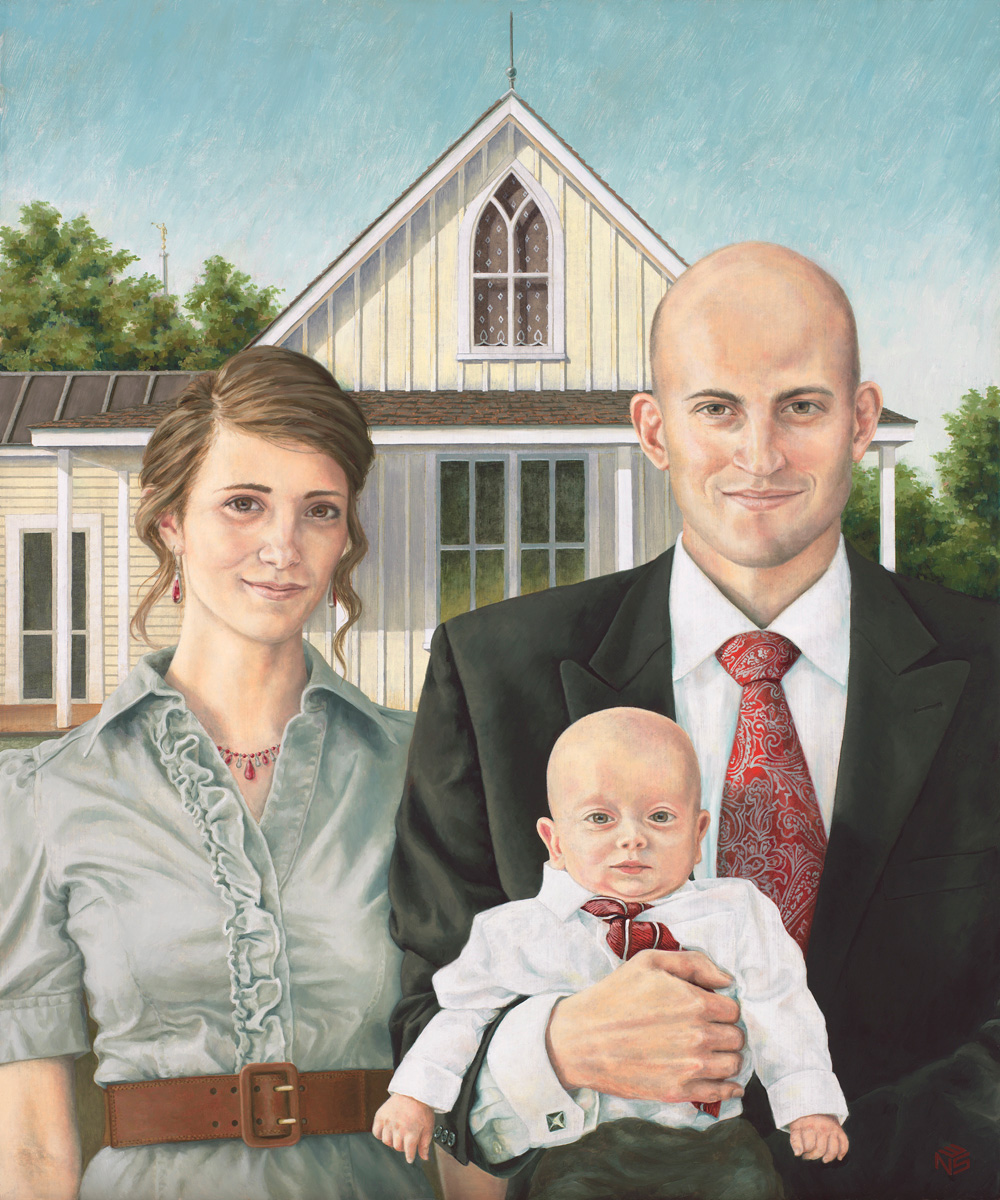
Tell us about painting Mormon Gothic.
While thinking of ideas for a new religious piece, the idea of being careful of what one loved or sought for in life kept surfacing in my mind. Also, traditional values and activities verses the modern consumption of media and outright obsession with self through social media were prevalent themes. I had recently joined a certain popular social media site due to pressure from friends and the lack of traditional contact due to people shifting to an online way of doing everything including communicating and event invitations. I only made it four months on there before I was completely overwhelmed and had the realization that I was rapidly changing from the person that I was, into being selfishly obsessed with carefully grooming my online persona and feverishly checking on that site all the time. The daily frenzy and the complexity of new social expectations without any hard and fast rules was too much for me. Ultimately, I made the personal decision to cut that particular aspect of online connection and take my social losses to regain my old life back, where all I have to deal with are the internal voices that can already be difficult enough to quell.
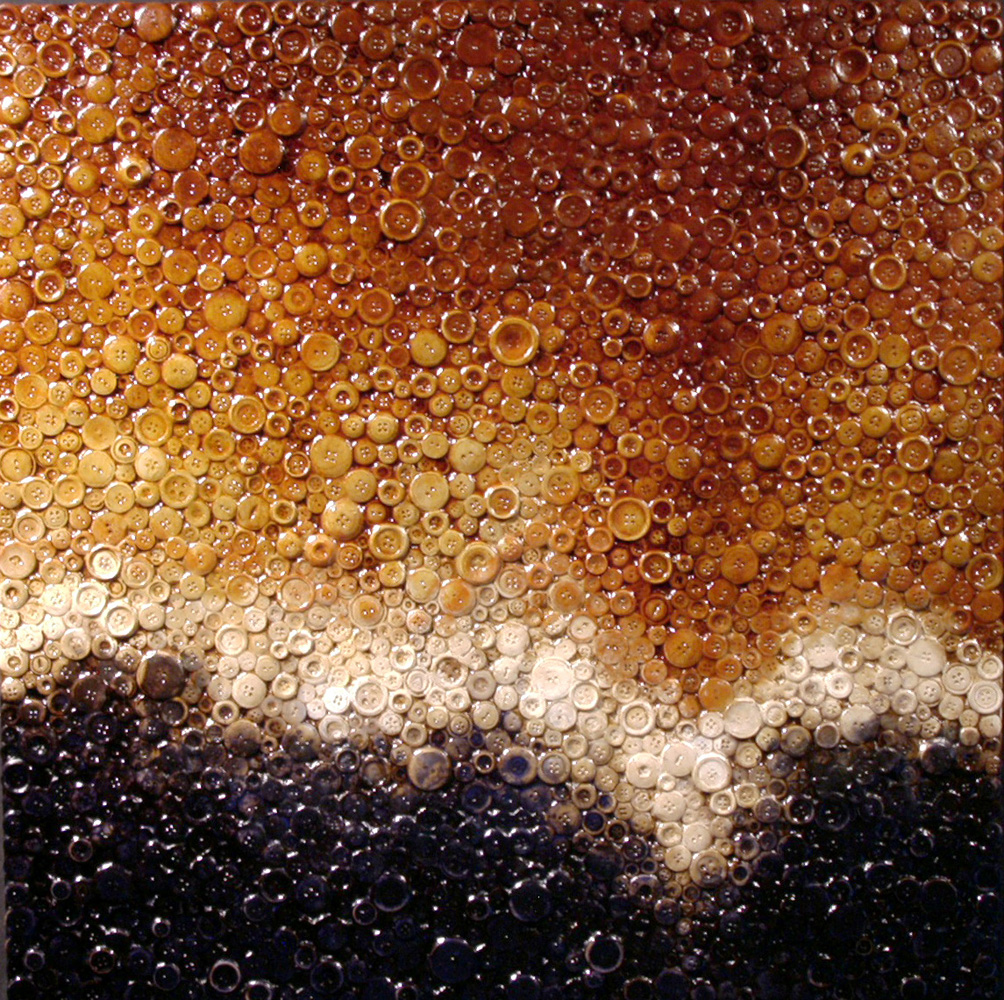
While I was pondering these things, the image of the famous painting American Gothic by Grant Wood kept coming into my mind. Being fully aware of its ubiquity in being re-purposed for anything from cookie packages to family reunion t-shirts, I still felt that it would be perfect to utilize for the idea of being careful of what you want or love in life. Also, the idea of playing off something that was iconic and popular yet old-fashioned at the same time was very appealing to me. My original concept consisted of two panels. One would have been what I call the “less effective example” and the other panel would be the “ideal” example. I envisioned a young married Mormon couple as the subjects, but they would be doing entirely different things in each panel.
Panel #1 would show them in very expensive and flashy clothing. The man would be holding his phone or device instead of the pitchfork. Completely engrossed with earbuds booming, he would be looking intently upon the screen and be slightly turned away from his wife. His wife would be looking at herself in her pocket-sized makeup mirror, or her own glowing device, totally turned away from her husband. On the peak of the roof of their Gothic-style home would be a satellite dish bringing them endless options for distraction. The home would be in need of repair with broken windows and the siding partially falling off.
Panel #2 would have them both dressed in more modest but still respectable and stylish clothing. Both would be standing side by side, and the husband would be holding the scriptures instead of the pitchfork. No trace of a satellite dish, only the angel Moroni on a temple spire peaking over the trees in the background, with the home in good repair. (Brigham Young would be so proud!) I was not trying to create an anti-tech painting, just something that would help all of us to consider our usage of technology, what could be the end result or consequences of selfish or narcissistic tech consumption on a person, family, and ultimately on our society as a whole.
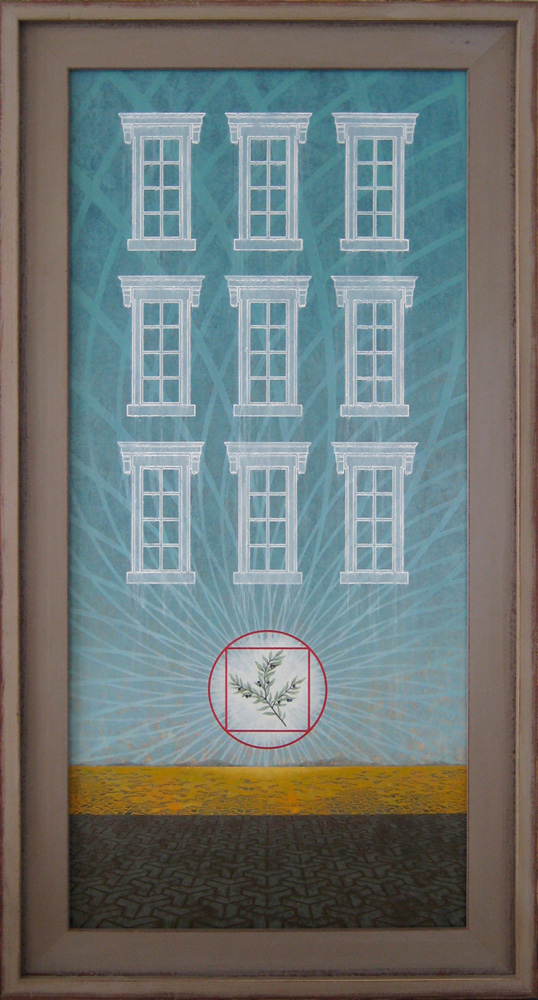
The models for the piece were in my ward at the time. The husband had the perfect bald head and his wife just so happened to have similarly attractive features that worked perfectly for this piece. I did an initial photo shoot with them before they had their first child. I was fully intending to paint this piece with two panels, but ended up putting off painting it for a year after the photo shoot because of other work that I was involved in. The following summer I decided that I needed to do a more professional photo shoot with the models. I also realized that my multi-panel idea was more work than I was ready to bite into. After all, I was barely learning to do figurative work after years of only doing abstracts and landscapes. I had also been feeling that it would be better to just focus on the positive example rather than the less effective example. I enlisted a friend who does amazing photography work to help with this second shoot. I had already been considering changing the scene to include their new baby boy, but was still holding on to the idea of the scriptures. We spent the majority of the photo shoot with their son in his father’s arm. I am glad that we did. While reviewing the photos I really liked the look of the ones with the baby. It was then that the painting shifted to be more about making family-friendly choices, and loving real things that are more in line with God’s plan for us as families. Interestingly, the following year I spent working on this painting seemed to be full of anti-traditional-family propaganda, policy-making, and massive media coverage, which solidified my resolve to finish this piece and my decision to make it a pro-traditional family piece.
The actual painting took well over a month to paint. I was working in a style that I had very little experience in. It didn’t really help that I had recently moved into a newer house and was in the middle of getting settled in and working on remodeling at the same time. Everything around me was in chaos and people were working in other rooms just outside of my new unorganized studio. To try to stay focused on such a detailed painting in this kind of environment was a definite challenge. Earlier that year, I was thoughtfully introduced to Bill Whitaker by a friend in my ward that modeled for him, and he was very generous in answering all of my questions about technique, materials, tools, and even in talking personally with me about life as an artist. I implemented many of the things I learned from him in this painting.
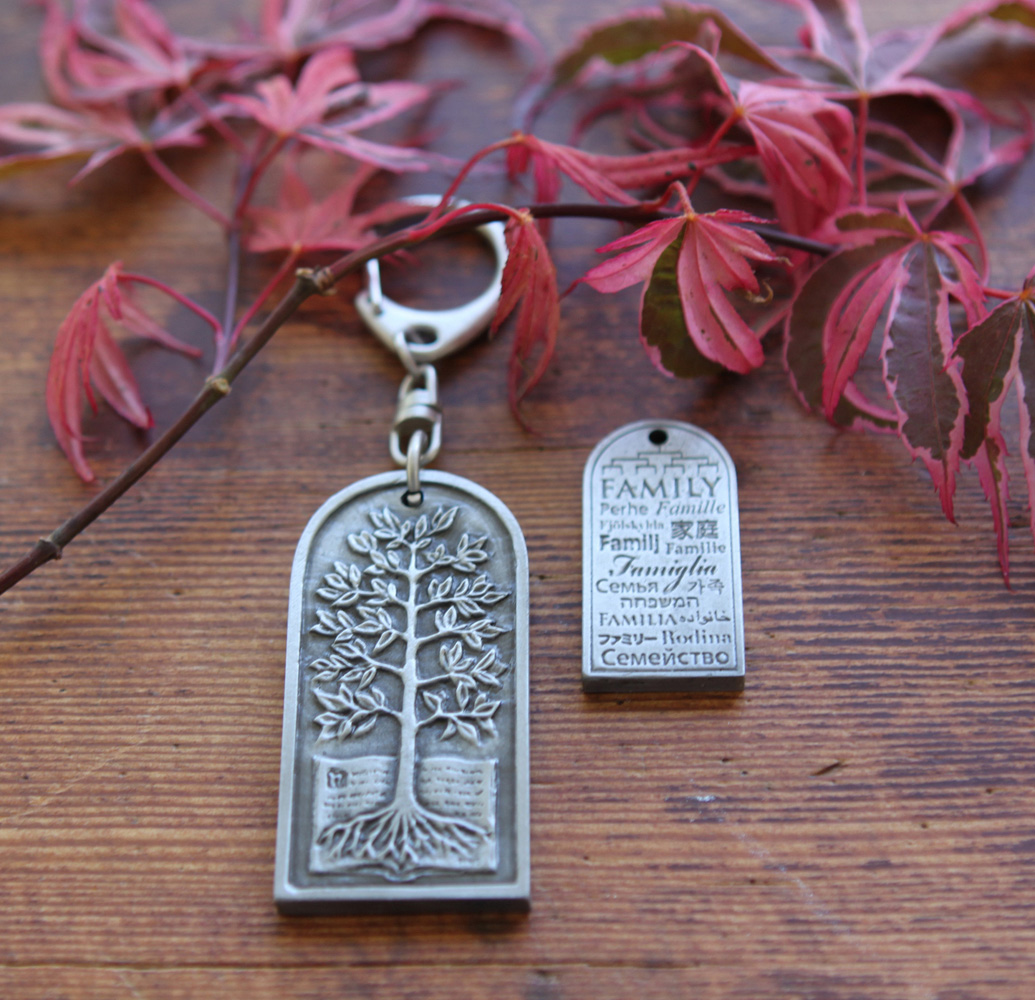
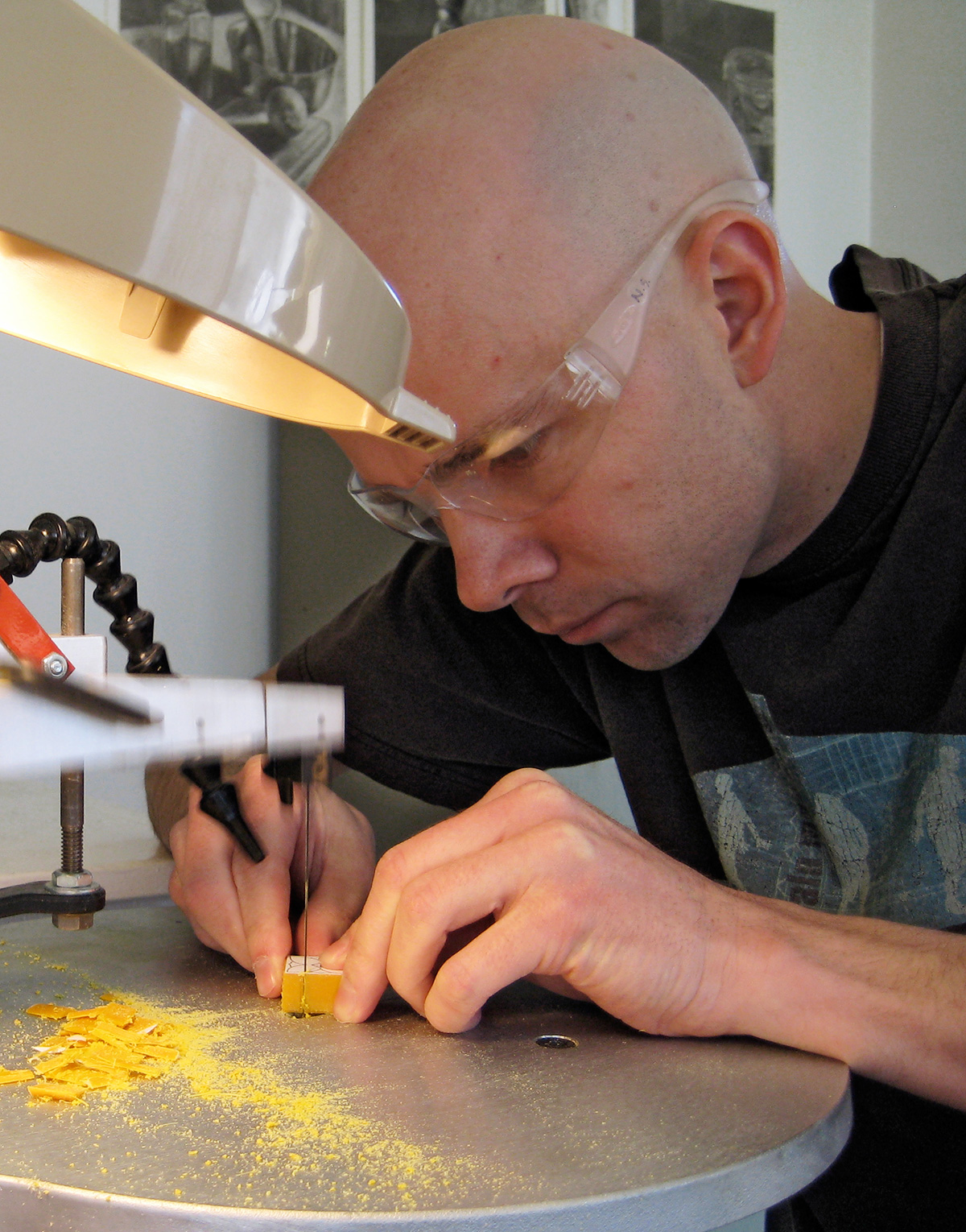
How does the gospel affect your art?
The blessings of being in the Church and gospel as an artist:
- It gives me a place that is stable to rely on when I am confused or overwhelmed. There is peace in the gospel, a resource that everyone needs, especially tormented creative types.
- It reminds me that I don’t have to be the one to keep on coming up with the good stuff, that God is the source of all beauty and truth, so he can be my idea consultant. The gospel can provide almost endless supply of subject matter for paintings—just open the scriptures or read Church history, or your own spiritual experiences in life.
- It keeps me more balanced than I probably would be (which is a subjective thing—some who don’t know me think that I am a very organized and disciplined person, but it is not true in all areas of my life).
- I feel like my art is improved greatly when I involve God in the process. Especially my ability to follow through to the end of it is greatly enhanced.
- I still have to struggle through a lot of work. Sometimes my religious works are very trying for my patience. But like anything in life, you just have to humble yourself and admit that it is bigger than you and that you need help from a higher source, and then actually pray to know how to move forward. If no answer comes, sometimes you just have to move forward on a part of it that you know how to do, and then the help will come as you are working. This is easy to say, but really hard to remember to do.
- It can give more meaning to my art for me personally. My work can take on a life of its own after being released for public consumption. I love it when a painting I do really moves or motivates someone to do better or feel better about spiritual things. God can take something that came out of my hands and studio and use it for his purposes in others’ lives, even if my original intention or meaning for the piece is different from what others see in it. I love that about art. It is not really mine, and it affects everyone in a different way. That is beautiful.
- It helps me process rejection and find hope in moving forward.
- The gift of the Holy Ghost helps me know when I am going in the wrong direction or when I need to change something that isn’t working, even if I have already spent many hours, days, weeks, or years on something. The end result is always better.
- I get to dig deeper into certain subjects so I can be doctrinally or historically correct in my portrayals of things. This can be very rewarding intellectually and spiritually. This also forms more connections and insights in my mind to various symbols and principles that I may not have had otherwise.
- The social and service-oriented aspects of the gospel can be very satisfying and rewarding to a lonely artist stuck in his studio. Having family and friends and assignments of people to watch over really help get me out of my single-track mind.
- It also reminds me that I have a lot of improving to do in life and shows the way to do that, because I am weak just like everyone else and fall short all the time.
What have you sacrificed in order to make art? (Things you would like to do but don’t because your art comes first.)
Off the top of my head I could say that there are a few sacrifices that come with constantly making art a priority, such as: a steady income, security, balance, a consistent schedule, expensive entertainment or travel, nice clothes and cars, sleep, healthy relationships, etc.
These sacrifices are no different from those of someone who is starting a business from scratch with very little capital, or someone who decides to marry young and have kids right away. Most people entering into either of these arrangements usually do so willingly and are more than happy to pay the price to make them work. In a sense they don’t feel like it is a sacrifice, but a great opportunity for something meaningful in life.
The flip side to the question is: What great creative projects have never been made because other things like work, home, family, and church responsibilities came first over making art? I hope that there is a time and a place in the eternities to create and get to know such unmade works.

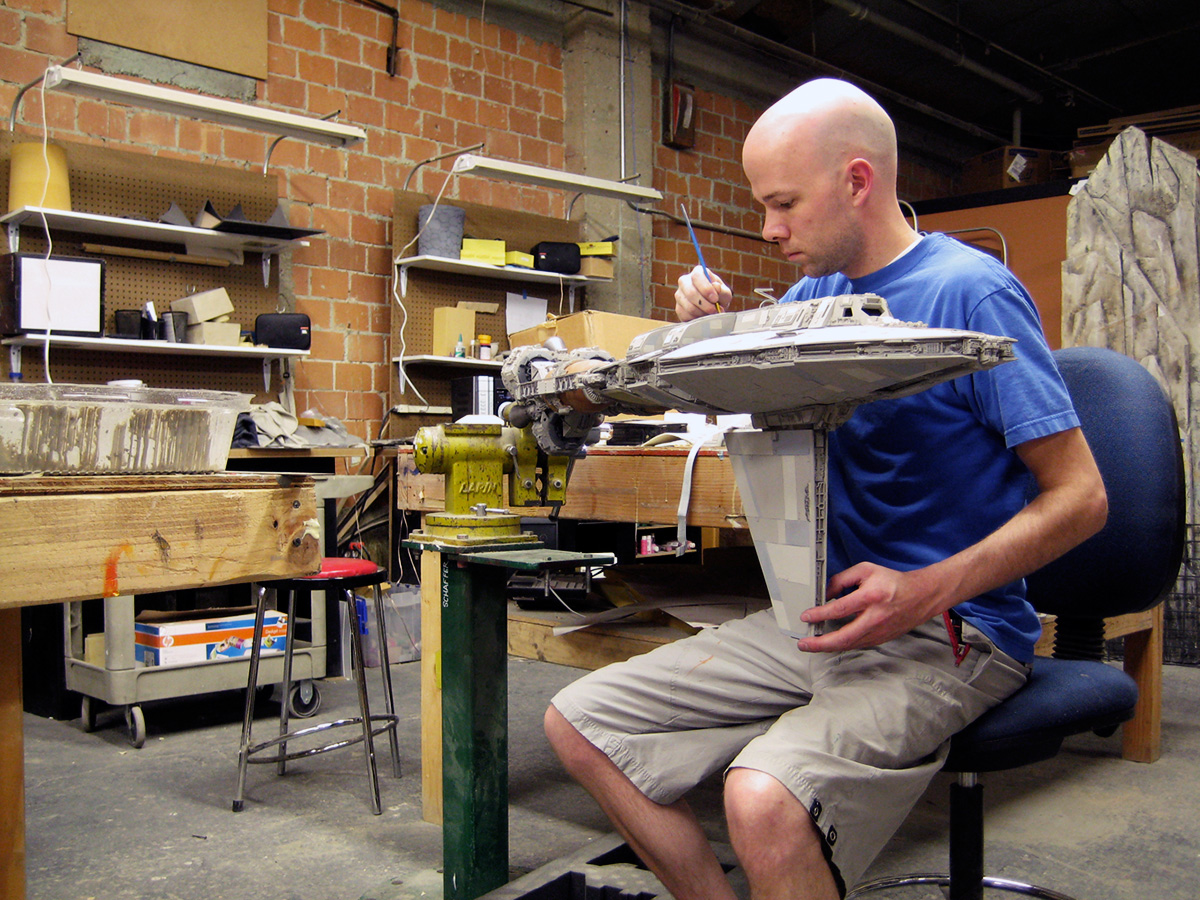
You work in several different types of media. Which is hardest for you? Which is most fulfilling?
In my fine art I work with oil, acrylic, gel mediums, metal leaf, etc. I work in three different styles—textural abstract (which is basically an assemblage technique using found objects like buttons or washers), mixed media semi-abstract paintings (which may still have texture, but it is only through gel mediums or thick paint), and more realistic paintings in either oil or acrylic or both.
On the commercial side of my professional life I do many different things, including: model making (architectural and film projects), set design and construction, props, foam costume fabrication, sculpting, carving, graphic design, and even a bit of sewing.
It is hard to say what is most difficult for me. I think that each material or technique has its benefits and challenges. There are usually a lot of factors that affect any given project—things like deadlines, complexity of subject matter, tediousness of details, quality of tools, comfort of the workspace I am in, how much it is paying or not paying, temperament of the client, my own temperament that day, how invested I am mentally and emotionally, etc. I know that I get tired of gluing small objects all over panels for hours and days in a row, and certain kinds of tedious models can be really hard on my neck and back, and the types of solvents and glues used aren’t something you would want to freshen the scent of your room with.
Any project that turns out better than I expected is always very fulfilling to me. Art pieces with personal or spiritual significance are generally more fulfilling than commissioned or commercial work, though I usually enjoy those projects as well. It is great to have breaks in between paying projects to get personal art done. Plus, I think that the variety can be very satisfying.
I really enjoy quick observational sketches or “no pressure” paintings that can be done in one day. I also get a calm feeling of contentment when I am modeling clay with my hands. One of the neatest experiences is seeing some set or model you designed and built being used in a film or commercial and having it look convincing and very professional. I remember the first time I got to see my name on the end credits of a local short film that I was proud to be a part of—that was really awesome.
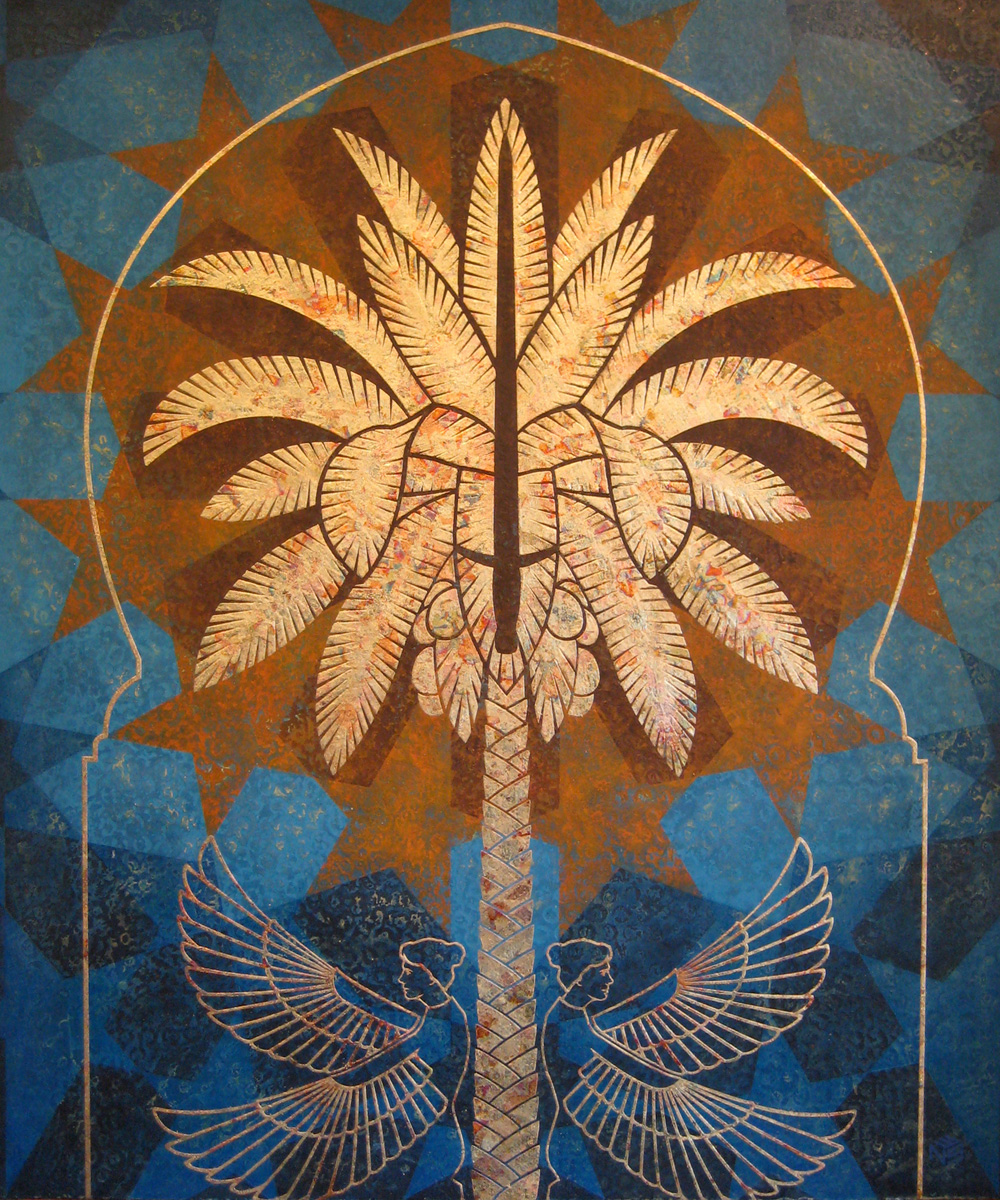
Can you talk about the story behind The Garden Gate and what influenced it?
The Garden Gate came as a result of working on my painting The Same Yesterday, Today and Forever. This is a painting that explores ancient and modern temples and various symbols associated with each. I was researching the aesthetic details for the doors of Solomon’s temple in 1 Kings. It described cherubim, palm leaves, and open flowers carved into olive wood which were then overlaid with gold. I had drawn up pages of sketches exploring various decorative motifs for the doors. While I was consulting with my brother Brad on this particular design, he suggested linking the imagery of the cherubim and the palm leaf, by making it a scene rather than a decorative motif. So the idea of the cherubim and the flaming sword came to fruition. Instead of a palm leaf, it was now a palm tree with fruit and a sword in it. I did a mockup of this design with the temple painting and held it over the area for the doors. While I loved the design by itself, it just didn’t work with the overall composition of the painting. It was too organic and busy compared to the linear and geometric quality of the painting. I was rather sad to have to cut it from the painting, so I decided that it should be its own painting.
To stay with the original intent of this design I knew that any additional elements I added would need to be influenced by ancient Middle Eastern art. The background is a beautiful Islamic geometric tile pattern, the gate is a typical onion-shaped Persian arch, the cherubim have a very obvious Egyptian-style wing, and the gold is reminiscent of the opulence of the ancient temple.
When I added the gate and the geometric pattern on the mockup version of this piece, I was amazed at how well certain things fit together and lined up perfectly—the stars around the tree, and the corners of the wings touching the corners of the stars. It was like it was meant to be put together in such a way. I chose the colors because they are my favorite colors, and they look fantastic with the metal leaf.
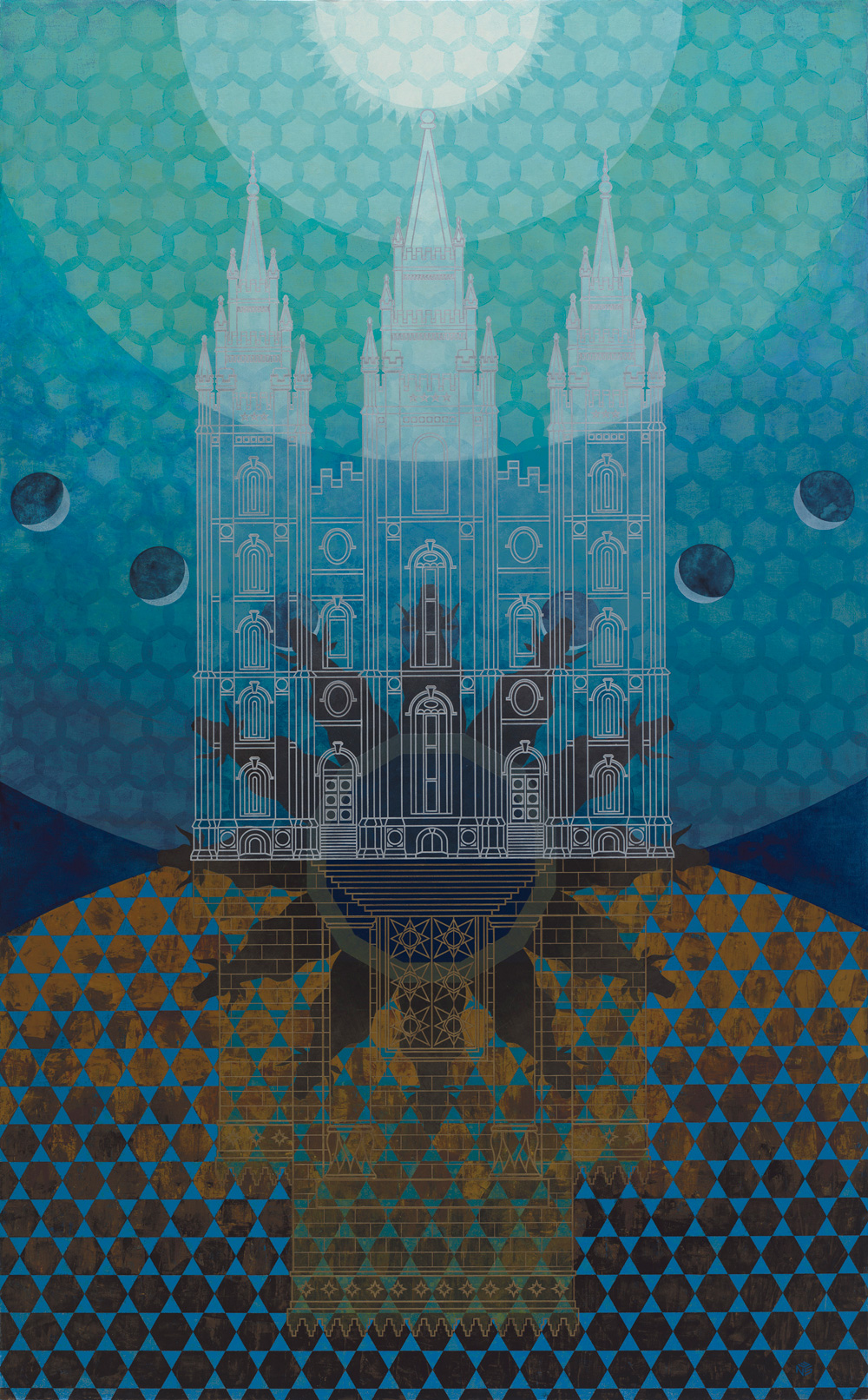
You’ve touched on this a little already, but can you talk about the use of symbols in your art, particularly in The Same Yesterday, Today and Forever?
In The Same Yesterday, Today and Forever, the whole piece is symbolic, in just about every detail. I don’t do this in all my work, but the temple is extremely symbolic and this piece barely scratches the surface of how many things could have been covered, and my knowledge of all the symbols is still in its infancy. This painting was a collaborative piece with my brother, Brad, and I feel it was one of the most directly inspired pieces that I have done. Upon first glance, many mistake it for just a modern depiction of the Salt Lake Temple, and don’t even notice Solomon’s temple on the bottom, until they have looked for a while and start to put things together.
The title refers to the timelessness of the temple ceremony and symbolic nature of what we learn there. There are many differences between the rituals of the Mosaic temple and our modern temple, but they are part of the whole story. One is preparatory to the other, and they are both eternal. Solomon’s temple is reflected below the Salt Lake temple as a foundation for it. The lower portion of the painting has a upward curving arch that represents the Earth or telestial kingdom. The drawing of Solomon’s temple in that area is depicted as a simple line drawing that is bronze colored. Running through this space is a pattern that is hexagonal in nature. The blue triangles of that pattern form a repeating Star of David motif, which is commonly associated with that era and people. The star motif is also representative of the telestial kingdom. I continued the star theme on the doors and the frieze of Solomon’s temple. The brown tones in the hexagons are painted with a palette knife in thick textures to add to the meaning of this section of the painting being earthly or rough. The blue and brown triangles and hexagons together represent the dry land and water of the earth.
At the line between the two temples there is a shape that is twelve-sided. This is the baptismal font with silhouettes of the oxen radiating from it. I placed this between the two temples because it is one of the main commonalities between the two temples—the one font located in the courtyard of Solomon’s and the other under the ground level of modern temples. I placed it underneath the doors of both temples as a symbol of the entrance or gate, since baptism is the beginning point or entrance of all the saving ordinances.
On the upper portion of the painting there is a silver-colored line drawing of the Salt Lake Temple, drawn this way to remind us of precision and exactness or a blueprint for our lives. Inside the temple, the color becomes more opaque and white the higher you go within the temple, which parallels the idea of gaining further light and knowledge as you progress towards exaltation. On this upper portion of the work there are also other concentric circle areas. The area that curves through the bottom and mid-section of the Salt Lake Temple represents the terrestrial kingdom. Inside this circle are various phases of the moon, which is the symbol of the terrestrial kingdom. The crescent moons also line up nicely with two of the horns on the oxen. The upper three circles that are lighter blue are indicative of the celestial kingdom. The highest circle has triangular points that represent the rays of the sun, just as they are carved on the exterior of the Salt Lake Temple. The paint texture and quality within the terrestrial and celestial circles is smooth and almost etherial, and is more blue in hue, representing the sky or the heavens. There is a pattern running through the top section of the painting that is similar to the pattern below, but it is circles that are interlaced, suggesting a linked unit, or the main purpose of the saving ordinances of the temple—they link us to our heavenly family in the past, present, and future.
The actual size of the panel that it is painted on is made according to the golden ratio in sacred geometry, with the golden division happening at the line between the two temples. This division is also known as “unity” and can be a symbol of mediation or of the Savior. In overview, this painting portrays a unified picture of heaven and earth, old and new, states in life and death, the bringing together of God and man, lower laws and higher laws, and the Aaronic and Melchizedek Priesthood.
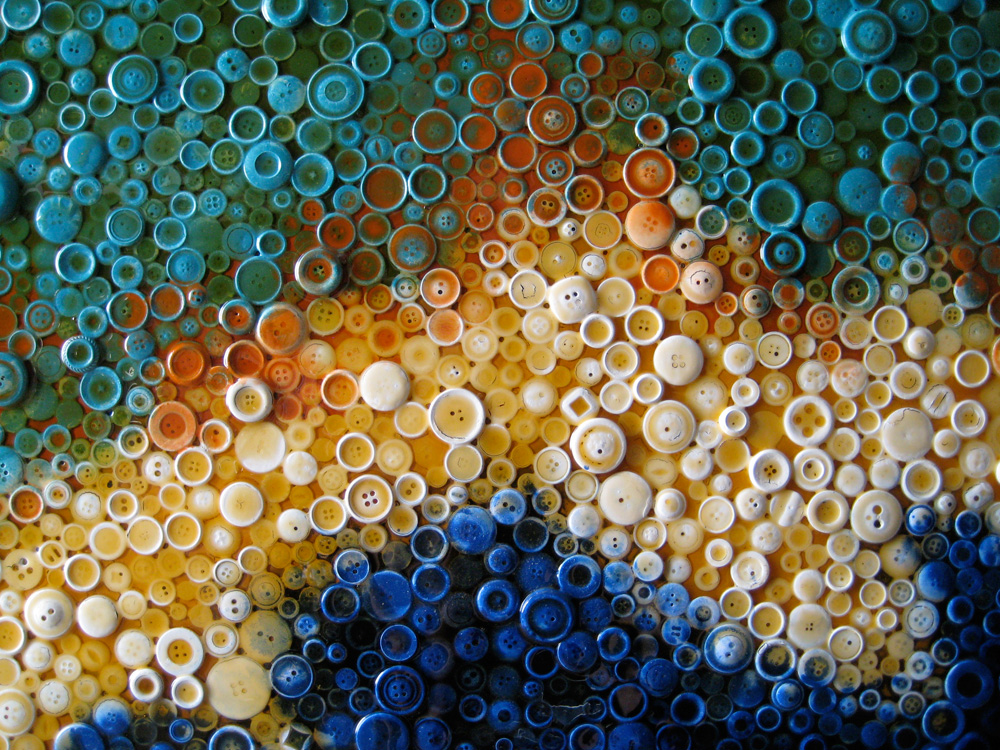
How did you develop your geometric, textural style of painting?
There are a couple things that started the whole process. The first event happened in the early 2000s when I went to an art show in Mesa, Arizona, with another artist friend of mine. I really liked the textural pieces that were there. I spoke with the artist that night and asked him quite innocently about his technique. His response was that he never tells his secret methods to people. I was rather surprised by his response, but I totally respect him for being so truthful and direct. His answer only made me more determined to figure it out on my own. So I began thinking up any thing that I could to create such textures and tried all kinds of materials. Back then I don’t think there were as many books or online resources for how to make so many textures like there are now. Or, I just wasn’t smart enough to really research long enough to find them. The benefit of trying it all on my own is that I had years of fun experimenting with all kinds of materials, and they actually spawned many of my own techniques that were not originally intended. I still experiment when I have the time, but usually I will look it up online to find how other people are doing it, or just ask other artists who are willing to share their techniques.
The second event has more to do with my heavy textural pieces that often include items like buttons, puzzle pieces, washers, coins, etc. It happened around the same time as the above mentioned art show. I wanted to make some custom tables for my living room, and I really wanted something texturally unique to have under glass inside the tabletop. I was talking about this with my family at Christmas and we came up with a whole list of things you could put on the top of a table to make it cool. The original idea was copper BBs (used as projectiles for air rifles). I actually built the tables and have somewhere in the range of 1,500 BBs in each tabletop. The light from the lamps on the tables makes them glow very nicely. The next logical step was to make similar things but as pieces that hang on the wall, which resulted in many frequent trips to thrift stores and army surplus stores, and other collecting and rummaging from relatives and friends to gather adequate amounts of found objects that could be glued on a board. I also gained quite a bit of experience with many adhesives and gluing techniques over the years.
What are you currently working on?
Right now I have several projects in various stages. I am attempting to put together a series of oil paintings that portray people or scenes that represent the theme of “Hope in Simplicity.” It has to do with simple activities or hobbies that bring great results spiritually and temporally. It also has to do with living providently, a goal that I admire and hope to perfect someday.
I also plan on entering several competitions this year, including the Church’s international show, and have some larger religious pieces started for them. I am doing some art workshops with other artists to further educate myself. I am also currently working on a decent-sized remodeling project at home and have several custom pieces of furniture that I need to build and a gardening system to implement. As usual, I have too many ideas and things to do in the time that I have. ❧
